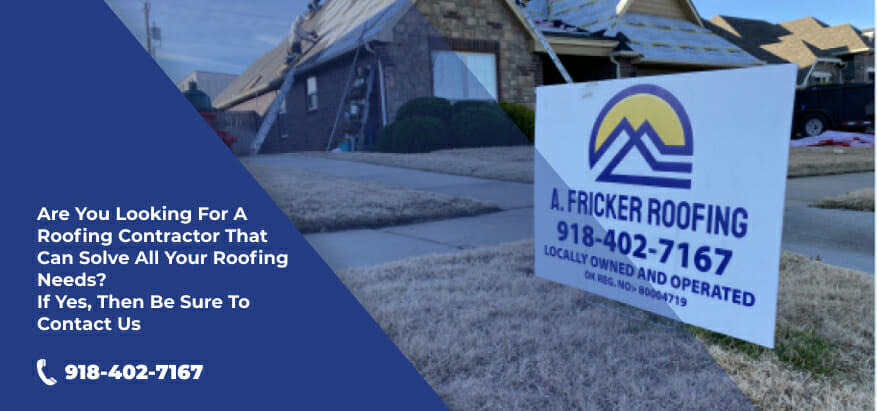There’s no denying that trees can amplify the beauty of a landscape. But for all their charm, when they’re too close to your home they can become more of a worry than a nice thing to look at. Mainly, the branches that hang close to the surface of your roof raise several questions regarding the integrity of your roofing materials, and how far the branches should be from your home.
Let’s delve into these matters more comprehensively to help you gauge the risks of keeping tree branches close to your roofing structure. This article aims to help you understand the dangers that tree branches can pose to your roof and enhance both your understanding and peace of mind.
The Ideal Distance Between Your Home And Tree Branches

If you’re wondering how far trees should be from your house, experts suggest maintaining a specific distance from your property to ensure optimal safety. Arborists recommend that mature trees should ideally be placed anywhere between 20 to 30 feet away from your residence, and sometimes even up to 50 feet, depending on their type. It’s essential to consider the species of the tree as it greatly influences its growth tendencies and the resultant reach of branches.
Regarding the question of how far tree branches should be from your roof, professionals recommend maintaining at least a 10 to 20-foot distance between your rooftop and any overhanging limbs. This distance is critical for practical reasons, such as limiting access points for pests and reducing the buildup of organic waste on roofs that could lead to potential damage. However, you should remember that this isn’t a universally applicable rule. It’s necessary to consider unique circumstances related to your home’s geographical location and its surroundings, along with the specific characteristics of each tree, before implementing these guidelines.
The Consequences Of Tree Branches Too Close To Your Roof
Let’s delve into an area that many homeowners don’t think about, which is the potential consequences of tree branches getting too close to the roof. The aftermath could range from minor inconveniences like pest and wildlife intrusion to more serious and costly situations, such as significant roof damage.
1. The Risk Of Pest And Wildlife Intrusion
Overhanging tree branches provide a natural bridge for pests to access your roof, especially if their limbs overhang or reach down to the surface. Imagine waking up in the middle of the night, noticing strange noises only to realize your attic has become a place for uninvited guests. Squirrels, raccoons, and rats, among other critters, use tree branches as ladders to gain easy access to your home.
Beyond being a mere nuisance to your peace, these invaders often carry diseases that pose harm not only to you, but also to your pets. For instance:
- Rats have been known to carry diseases such as leptospirosis and hantavirus, which can be transmitted to humans.
- Similarly, raccoons may harbor roundworms, which are parasites that can cause severe infections if in contact with people.
It’s quite surprising to know that even insects use this type of pathway! Tiny wood-boring bugs, like termites or beetles, find their way into your roofing materials by crossing over an inviting branch.
2. Impact On Roof Structure And Integrity
During windy weather, overhanging branches tend to rub against the roof’s shingles, causing subtle but relentless damage over time. This constant abrasiveness removes the protective layer of the roof materials, such as shingle granules on asphalt shingles, making them deteriorate faster than usual and increasing the likelihood of leaks. Additionally, fallen leaves can block gutters, causing water accumulation, which in turn promotes rot and mold growth.
These scenarios can occur individually or in combination with one another, and they can weaken the structural integrity of your roof over time, making it less effective at protecting your home during harsh weather conditions.
Moreover, snow can weigh down branches, causing them to snap, potentially leading to significant damage on your roof such as large holes. It’s important to note that most insurance policies won’t cover preventable damage, which is often used as an excuse for roof damage from overhanging tree branches. To avoid any damage to your roof, it’s essential to keep a safe distance between trees and your roof. This is an important piece of advice that professionals and informed homeowners alike swear by.
Factors To Consider When Estimating Safe Distance
Deciding on how far tree branches should be from your roof is not a one-size-fits-all situation. There are several factors you will need to take into account to make an informed assessment. Let’s delve deeper into this.
1. Tree Species And Growth Patterns
Different trees come with unique growth patterns and sizes, some growing taller and faster than others.
- Fast-Growing Trees: If your property has fast-growing trees, maintain a greater distance from the house, as these trees can rapidly grow upon your roof.
- Slow-Growing Trees: Conversely, for slow-growers, a closer distance may work without facing the risk of overhanging branches.
Remember, the key is to balance shade and aesthetic appeal against prospective safety risks.
2. Roof Material And Vulnerabilities
Your roofing material can play a pivotal role in determining a safe proximity between it and looming branches. Some materials are more vulnerable to damage from overhanging branches.
- Asphalt Shingles: These roofs might sustain damage if they’re constantly exposed to tree branches that rub across their surface during windy days.
- Tiles & Slate: Ceramic tiles or slate shingles may crack under impact from falling branches.
- Metal Roofs: Metal roofs might fare better against potential tree-related issues, but they aren’t entirely immune either. Branches may scratch off their protective coating, making them vulnerable to fading.
3. Local Climate And Weather Conditions
Your local weather conditions also significantly influence how close trees should be to your home.
Regions that frequently experience severe storms should keep a bigger distance between trees and their home to prevent the chances of damage from wind-driven branches. Similarly, areas prone to snowfall in Tulsa, OK, should keep a distance between the roof and trees due to the risk of snow-laden branches breaking and falling onto the roof.
On the contrary, if you live in a milder climate, shorter distances might be just fine. Be sure to consult with a local arborist or roofer for personalized advice based on unique geographical conditions.
Consult Professional Roofers In Tulsa, OK, For Your Roofing Needs
Now that you know the answer to the question of how far tree branches should be from your roof depends on several factors, including roofing materials, your area, and the local climate, it is essential to consult a roofing professional to estimate the distance between tree branches and your home. Contact the team at A. Fricker Roofing and Waterproofing in Tulsa, OK, to inspect your roof. Or, if your roof has experienced severe damage due to tree branches, contact our expert roofers for roof repair or replacement. Just give us a call today at (918) 402-7167 and learn more about how we can help you.

